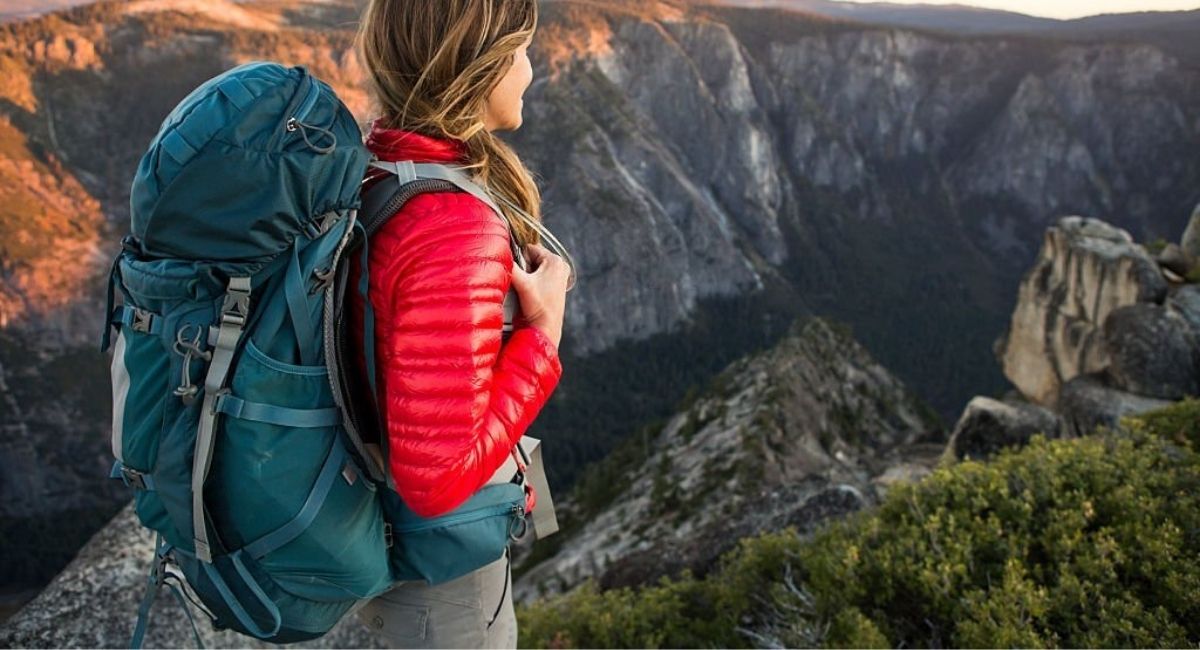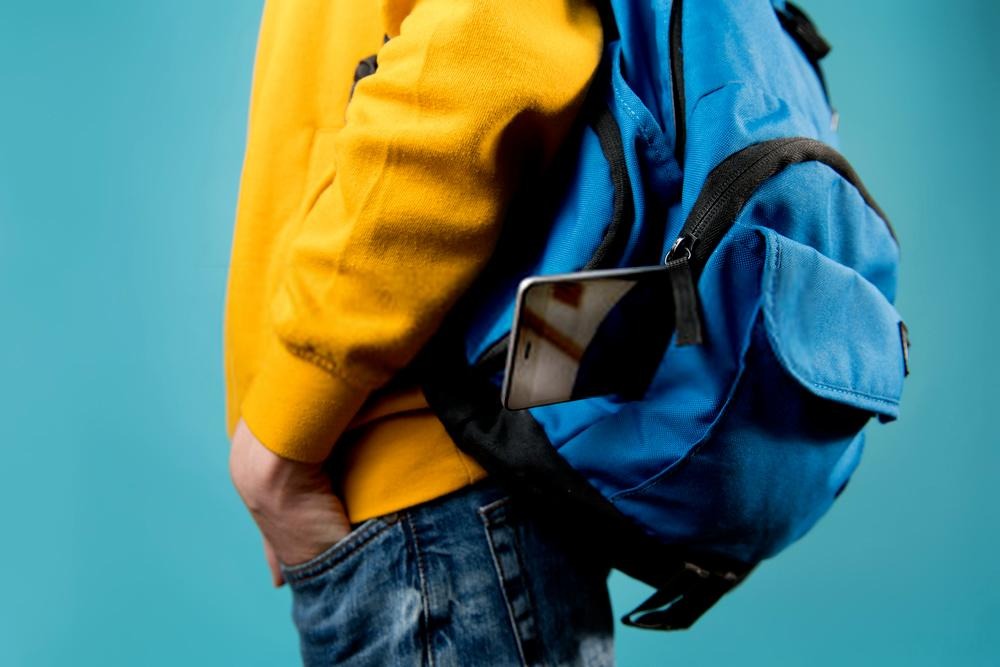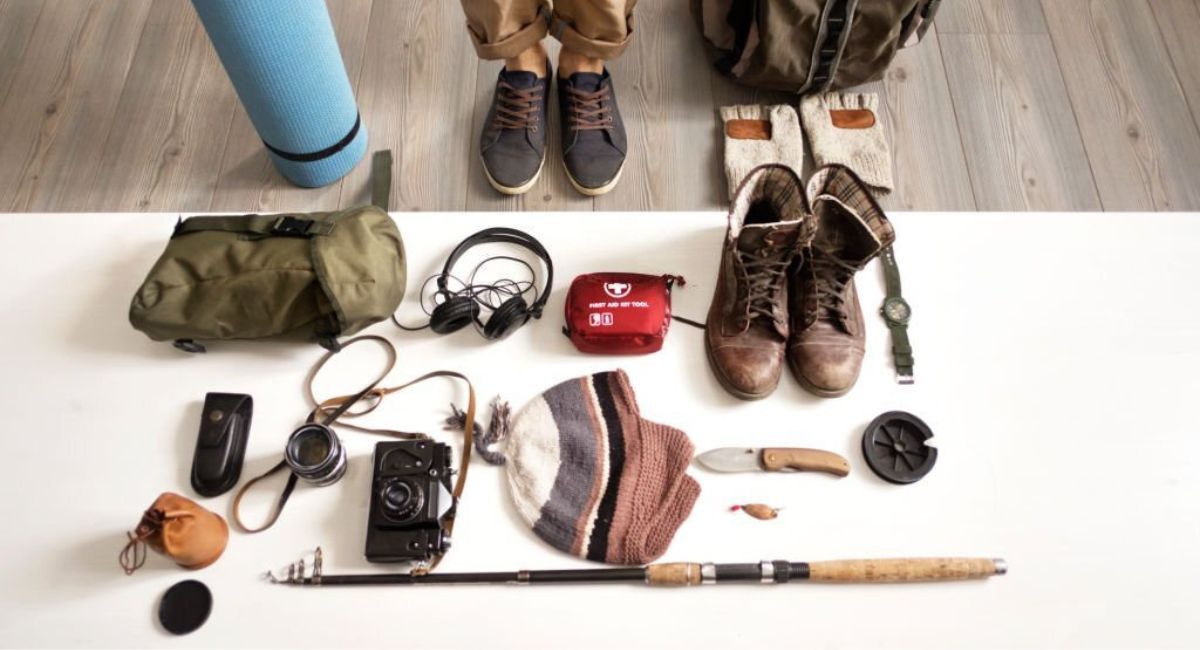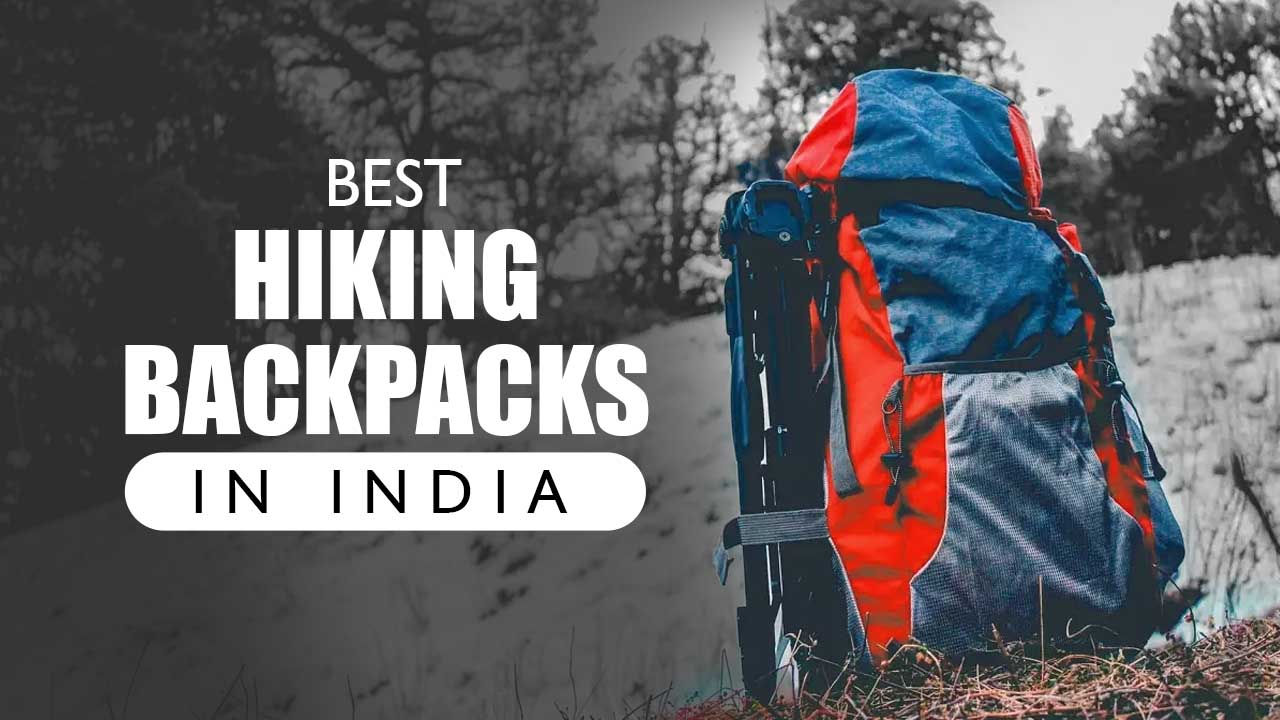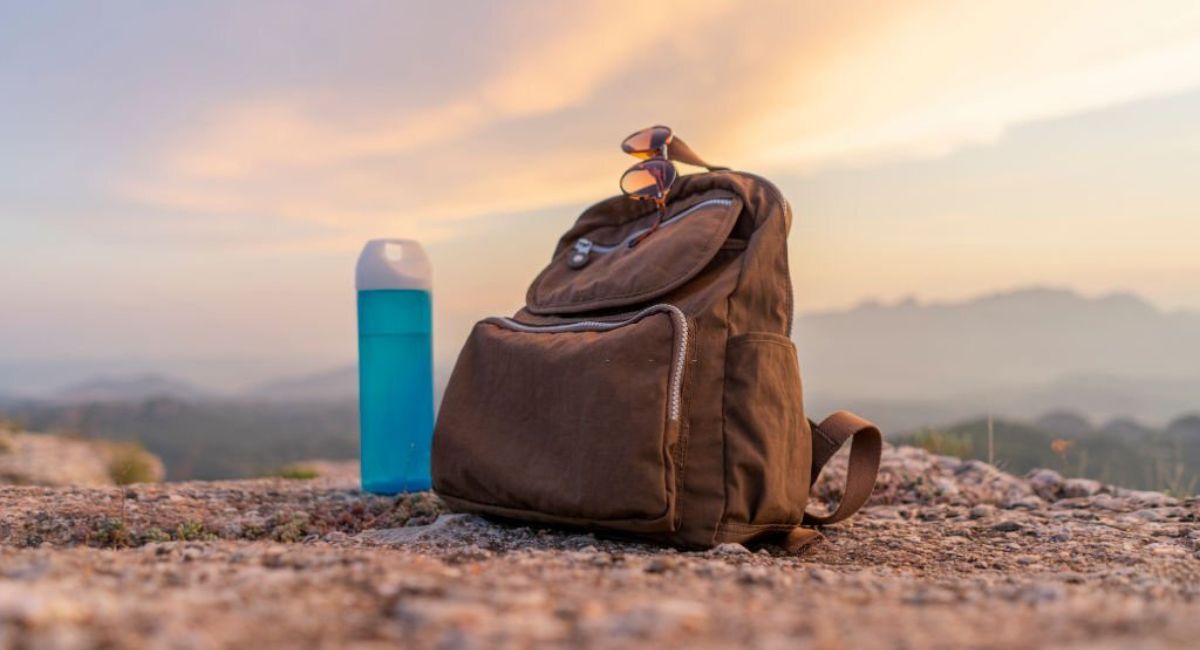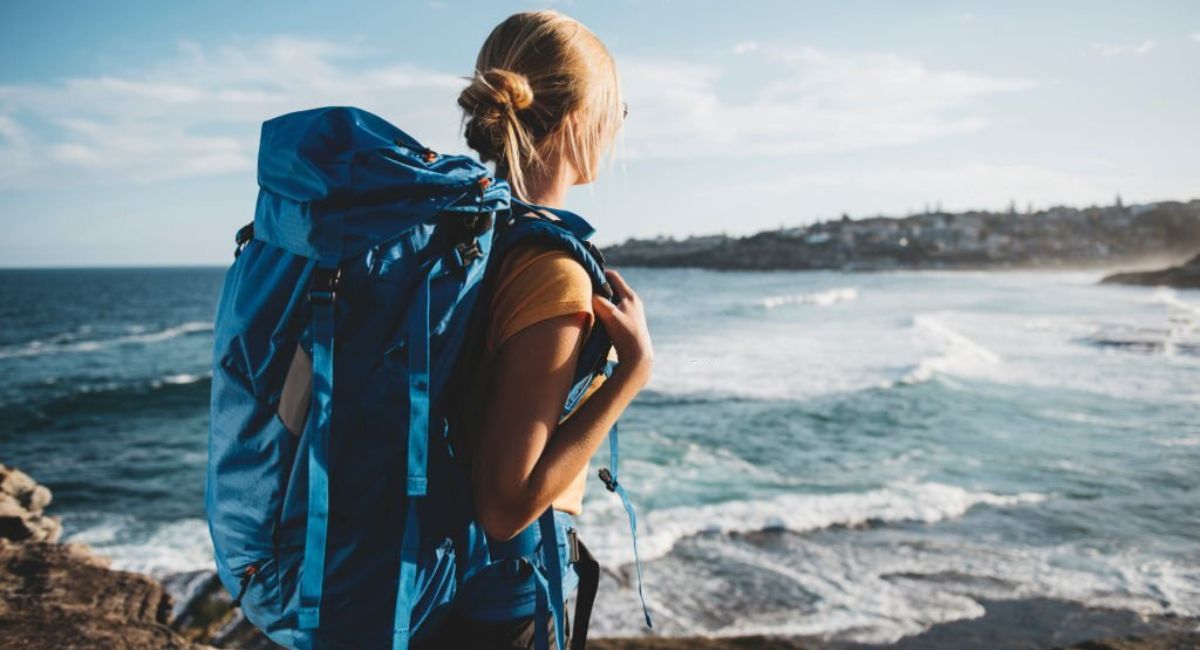In this article we will see 16 tips to start trekking dedicated to beginners who have never practiced trekking. You will discover the technical equipment necessary for hiking and we will see why trekking could change your life forever.
Physical preparation, the preparation of suitable equipment, how to eat: here are the rules to ensure that a walk on a mountain path, with a difference in height of several hundred meters, becomes an exhilarating experience, so beautiful that you want to repeat and tell it.

Trekking Tips for Beginners
If you’re thinking about going on a trek, you’ve come to the right place! Trekking is an amazing way to connect with nature and get some exercise, but it’s important to be prepared. Below, we’ll give you some essential trekking tips for beginners. With these tips in mind, you’re sure to have an amazing trekking experience!
1. Physical preparation for trekking
Those who are not used to walking for a long time, perhaps because they lead a sedentary life, will find it difficult to complete a path that can be bumpy or foresee a difference in height of up to several hundred meters.
The consequences of a path in the mountains, for those who are not adequately trained, are the classic muscle pains.
For this reason, the advice for those approaching trekking is to gradually start tackling the itineraries.
The ideal difference in height for beginners should never exceed 400 meters, which corresponds to about an hour of uphill walking.
Before tackling more challenging trails, a dozen or so excursions can be made, perhaps during the weekend; half a day of walking at a slow pace is enough to accustom the body to the effort.
Later it will be good to increase the effort, increasing the altitude difference and length of the itinerary; in this way at the tenth exit, you will no longer feel the fatigue of the beginnings.
2. Start gradually
At the end of the training phase, it will finally be possible to tackle a path with a difference in height of more than 400 meters.
The pace of the first “official” leg will still be staid and the length of the itinerary no longer than the last one faced in training. Trekking is not a competitive sport; it is not a competition.
Enthusiasts choose the mountains, and nature in general, because they combine physical training with contemplation of the landscape.
Contrary to what happens in sport, in trekking the goal is not only the finish line but the experience of the itinerary: an important part of the experience is to enjoy the beauty of the scenery, especially when you walk alone and only feel your own. breath and the sounds of nature.
Therefore, it is always good to start gradually, because an itinerary that is too demanding prevents you from enjoying the walk and everything around.
The paths can be chosen strategically; you can find all the information relating to the individual itineraries on specialized sites and guides:
- Those marked with the letter T are tourist.
- Those hiking are marked with the letter E.
- Experienced trekkers tackle the routes of the EE category.
- The paths for expert and equipped trekkers are indicated with EEA.
If you are a beginner, even with a good workout behind you, you can easily start with a T itinerary. If the body’s response is positive, the next time you can think about tackling an E itinerary immediately.
The advice is always to listen to your body, regardless of the itinerary you are facing. If you are out of breath and feel tired, it is good to stop, take a break, quench your thirst, and then resume the journey at a slow pace.
3. Study the path before embarking on it
Before embarking on the trekking itinerary there are a series of steps to complete. The most important is the study of the path you are about to face.
You must be prepared: the study of the signs is as important as the information on the difference in height and the average duration of the journey.
The advice is always to rely on those who know more: it may be necessary to consult a trekker who has already faced the path.
In this case, if you can’t accompany us, a chat will still be very useful. One idea could be to consult the numerous forums on the internet. You get valuable information on the route and lots of tips so as not to leave completely unprepared.
If you don’t know who to ask for useful information, you can consult guides, even online; all the trails are marked on the maps. The ideal is to also have a map of the area, preferably topographic and paper. There are also GPS applications that help in case you are in trouble.
4. Check the weather conditions
Once you have chosen the path and the date on which to tackle it, it is always good to check the forecast weather conditions for the day.
If the conditions are prohibitive, the trekking can be postponed; if, on the other hand, there are no risk situations related to time, it will be possible to decide on the most suitable clothing and consequently what is needed to carry inside the backpack.
Nature must be respected and faced with humility; even a walk in the mountains, if not approached with caution and safety, can turn into a negative experience.
5. The first few times it is good to go with an expert
Trekking alone is not the best choice. As has already been written, hiking is somewhere between sport and a spiritual experience. However, the “sporting”, competitive part is present, because the body is put to the test.
Nor should we forget the context in which trekking is practiced; the mountain, for example, where trekkers often love to try their hand, is a place that hides dangers, sometimes even fatal.
For this reason, the advice is always to start walking with an expert person, who knows the itinerary perfectly. Training is not the only indispensable condition to tackle the routes safely. Even the simplest path, the tourist one, can hide pitfalls.
An expert person will be able to advise, guide, mark the route with the right breaks and advise when it’s time to stop. It is a great opportunity because it allows you to experience it first hand, and at the same time to know aspects that you would only learn on your own after a few years of trekking behind you.
6. If you are traveling alone, tell someone your itinerary
After the first excursions in the company of more experienced trekkers, it is always time to tackle the path in solitude. There are many itineraries behind them; you have all the right equipment; the weather forecasts have been checked and the topographic map is in the outside pocket of the backpack, within easy reach.
Basically, the homework has been done and it’s time to leave. Before leaving home to tackle the day of trekking, regardless of your experience and preparation, you need to inform someone, better if an expert hiker, about the itinerary you are about to tackle and its duration.
Venturing into nature is wonderful but as has already been written, the risks are always present. In the event of an unexpected event, capable of putting even the most experienced hiker in difficulty, there will be someone able to help us because they know more or less our position. This allows you to alert the rescue quickly and in some cases the timing can even save lives.
7. Choose the backpack that suits your expectations
The equipment is one of the fundamental items if you want to practice trekking in safety. For this reason, the choice of the backpack becomes fundamental. There are low, medium, and high-end models on the market.
To get started it will be enough to buy a mid-range backpack. If you are not an expert on the subject it is good to get advice from an expert, because there are many models of hiking backpacks on the market, take a look is our complete guide to choosing one of the best hiking backpacks in India.
At the time of purchase, it will be necessary to pay attention to the quality of the fabric: it must be waterproof. The robustness of the harness must also be checked. Furthermore, the empty backpack should not be too heavy, but it should also be roomy. It should have adjustable back straps, to fit the wearer’s physique. The padding will be soft, to cushion the blows on the back during the walk.
It is important that it is equipped with compartments, each with an opening, to easily reach the objects you need when needed. The external pockets will hold important objects, which can be found immediately, such as the map, the mobile phone, the flashlight or the umbrella.
A mid-range backpack, suitable for both beginners and more experienced trekkers, will weigh around 1 kg when empty and have a capacity of around 60-70 liters.
8. Do not load the backpack too much
For trekking you need balance, even in the choice of what you want to bring with you. For this the backpack should not be too loaded. Walking light is important because it helps you not to feel fatigue.
Arriving exhausted at the end of the route can also cause physical problems, such as cramps or muscle fatigue that would make the way back tiring.
9. Suitable, technical, and layered clothing
In conjunction with the choice of the backpack, it is necessary to focus on technical clothing to tackle the excursions. The hiker needs suitable clothes and some important equipment to adequately tackle the paths, from the tourist ones to those for expert hikers.
It is not always easy to predict what the weather will be, so it is preferable to wear technical garments, adding or removing according to rain, increase or decrease in temperature. A roomy backpack helps to cope with the temperature range, as it allows you to leave well equipped.
You must avoid sweating excessively because the wind, if the temperature drops as you rise, can cause muscle problems. Avoid cotton and use, for the outermost layer, a synthetic fabric that insulates from the wind and is waterproof.
A good advice is to equip yourself with trekking poles: they help you to walk because they allow you to keep your balance: they allow you to safely tackle the descents and to unload part of the weight of the backpack and of the body on the muscles of the arms.
10. Choose your shoes carefully
When trekking, the feet are the most stressed part of the body. Shoes therefore must be suitable for the activity. It means that they must be comfortable and have certain technical characteristics. There are no possible alternatives to trekking shoes; even normal sneakers may not be suitable.
The characteristics of shoes for hiking are stability and adherence to the ankle, which therefore must receive physical support from the footwear worn: it is necessary to avoid sprains. Therefore, the main distinction is between high and low boots. The latter are suitable for tourist routes, the simpler and flatter ones.
The high ones, which support the ankle, are suitable for the most uneven routes, characterized by a significant difference in height.
11. Bring a survival kit, but don’t overdo it
By obeying the principle that you have to walk without excessive weight in your backpack, you don’t need to carry around a pharmacy. The survival kit for trekking consists of a few elements, really indispensable in emergencies:
- Disinfectants: to clean wounds in case of cuts and grazes
- Bandages and plasters: to close wounds and prevent them from getting dirty, causing infections
- Pain relieving drugs: to relieve trauma pain in the case of falls
One or two isothermal blankets: in the event of an accident, you could be forced to stay for a few hours in cold conditions; the blanket therefore serves to avoid hypothermia but is also useful in cases of heatstroke and to signal one’s presence.
12. Follow the planned route carefully
Once on the way to the goal, perhaps if you are well trained and well equipped, what happens to beginners in these cases could happen: a feeling of great safety and control of the situation.
It is the moment in which you risk the most because the confidence in your own means could lead the beginner trekker to make wrong choices, to risk more than necessary and to stress your body beyond measure, perhaps postponing the stops and setting unattainable goals.
This is the wrong attitude. The stops must be respected, it is useless to wear yourself out: it is contrary to the spirit that characterizes the experience of trekking.
The path must be constant, the pace regular, the stops planned at the right time by carefully following the map. The break is the moment in which you can remain in silence, in the company of nature.
13. Eating the right way during the excursion
To tackle the trekking route, you need to feed yourself in the right way. Regularly consuming chocolate or cereal bars will help the hiker to have the amount of energy necessary to continue his journey, and at the same time to keep himself light. Fresh fruit is also recommended, especially bananas, dried fruit, and lots of water. Food must be nutritious.
14. Trekking with children
Taking the children for trekking is a way to get them used to being in contact with nature; it is also useful because the little ones learn a series of rules that are also valid in other contexts: physical training, consistency, organization, and respect for the environment.
What is recommended is to always have an adult for each child. This rule applies because in the passages of the route, those where the risk of falls is greater, an adult can only help one child.
Furthermore, there is no need to subject them to difficult paths, or to too long journeys: they require continuous and prolonged concentration.
For children, trekking should be fun. A walk of a few hours on a tourist-type path will be ideal, especially if the adults are also beginners. There are equipment on the market, such as trekking backpacks and poles, suitable even for the little ones.
15. Respect the environment
Nature is an integral part of the trekking experience. The passage of the hiker must not leave any trace. For this reason, the rule is that the hiker must leave the environment he has crossed as he found it, so that the hikers who pass after him do not have to restore order, for example by cleaning the path of waste.
16. Share the experience with others
There are those who prefer to keep the joy of a beautiful experience all to themselves; there are those who want to share it, because he thinks that the excursion is completed with his story.
They are two different philosophies of thought, equally valid and worthy of respect. However, it is undeniable that sharing is also an act of generosity towards those who might appreciate it. Trekking can change the outlook on many aspects of people’s lives. It is an experience whose rules and characteristics are valid in many other areas of our life.
Safety Tips for Hiking
Hiking is a great way to get some exercise and enjoy the outdoors, but it’s important to be safe while you’re on the trail. Here are a few tips to help you stay safe on your next hike.
- Make sure you have the proper equipment. Good hiking boots, a map, and a compass are essential for any hike.
- Be aware of your surroundings. Watch for loose rocks or roots that could trip you up and take care not to step off the trail into areas with steep drop-offs.
- Be prepared for changes in weather. Dress in layers so you can adjust to changing temperatures, and always carry extra food and water in case you get stranded on the trail.
- Be sure to let someone know where you’re going and when you expect to return. This is especially important if you’re hiking alone.
- Stick to well-marked trails and avoid shortcuts.
- Watch out for wildlife and be sure to leave any animals you see alone.
- Take breaks often to rest and rehydrate.
- Hike with a buddy whenever possible. Not only is it more fun, but it also means there will be someone there to help if you get into trouble.
- And finally, always trust your gut – if something doesn’t feel right, turn back, or find another trail.
By following these simple safety tips, you can ensure that your next hike is enjoyable and incident-free.
How To Start Hiking Alone?
If you’re thinking about taking up hiking, or already love spending time outdoors, you may be wondering if it’s possible to hike alone. While it’s always best to hike with a partner or group for safety reasons, solo hiking can be a great way to get in touch with nature and enjoy some peace and quiet. Here are a few things to keep in mind if you’re planning on hiking alone.
Before you set out on a solo hike, it’s important to let someone else know your plans. Tell a friend or family member where you’re going and when you expect to be back and consider leaving a copy of your itinerary with them. This will help ensure that someone knows where you are in case of an emergency.
When you’re out on the trail, be sure to hike with common sense and take basic safety precautions. Be aware of your surroundings and pay attention to potential hazards, such as steep drop-offs or slippery rocks. If you’re carrying a cell phone, make sure it’s fully charged before you head out.
If you’re planning on hiking in remote areas, it’s a good idea to carry a GPS device or personal locator beacon (PLB) with you. These devices can be used to send a distress signal if you get lost or injured and can help rescuers locate you more quickly.
Finally, remember to enjoy yourself! Hiking alone can be a great way to relax and connect with nature. Be sure to take plenty of breaks to admire the scenery, and don’t be afraid to stop and chat with other hikers you meet along the way.
Conclusion
Now that you’ve reached the end of this article, you should be feeling confident and well-prepared to embark on your first trekking adventure. Remember to pack light but also make sure to include all the essential items on your list. It’s also important to choose the right trail for your level of experience and fitness. And finally, don’t forget to enjoy the journey and take in the stunning scenery around you. With these tips in mind, you’re sure to have an unforgettable trekking experience.
Frequently asked questions
1. How do you prepare yourself for trekking?
Trekking is a great way to get some exercise and fresh air, but it’s important to be prepared before you head out. Make sure you have the right gear for your trek, including comfortable shoes, plenty of water, and a map of the area. It’s also a good idea to let someone know where you’re going and when you expect to be back. Trekking can be a great adventure, but it’s important to be safe and prepared.
2. What should I eat during trekking?
There are a few things to consider when preparing food for a trekking trip. First, you’ll want to make sure that your food is lightweight and easy to carry. This means avoiding processed foods and packing light snacks that will give you energy without weighing you down. Second, you’ll want to choose foods that are high in calories and nutritious, as you’ll be burning a lot of energy while trekking. Lastly, you’ll want to make sure that your food is easy to prepare, as you’ll likely be cooking over a campfire or stove. Some great options for trekking food include dried fruits and nuts, granola bars, trail mix, peanut butter, jerky, and energy bars. You can also bring along dried pasta, rice, and beans for easy-to-prepare meals.
3. How do I increase my stamina for hiking?
There are a few things you can do to increase your stamina for hiking. First, make sure you are properly hydrated. Drink plenty of water before and during your hike. Second, eat a nutritious meal before you head out. A good mix of complex carbs and protein will give you sustained energy. Third, pack some healthy snacks with you to eat on the trail. Nuts, fruits, and granola bars are all great options. Finally, take breaks often to rest your muscles and catch your breath. If you push yourself too hard, you will only end up exhausted and could even injure yourself. Listen to your body and hike at a pace that feels comfortable for you. With some preparation and care, you will be able to hike for hours without getting tired.
4. How long should my first hike be?
How long your first hike should be depends on many factors, such as your level of experience, conditioning, and the difficulty of the terrain. A good rule of thumb is to start with a shorter hike and work your way up to longer ones. That way, you can gauge your abilities and build up your confidence before tackling a more challenging trail.
5. Should I eat before a hike?
It is often recommended to eat a small meal or snack before hiking, especially if the hike is going to be a longer one. Eating before a hike can help give you some extra energy to help make it up those hills. It is also a good idea to drink some water before heading out, as being dehydrated can make you tire more easily. And of course, don’t forget to pack some snacks and water for the hike itself.

